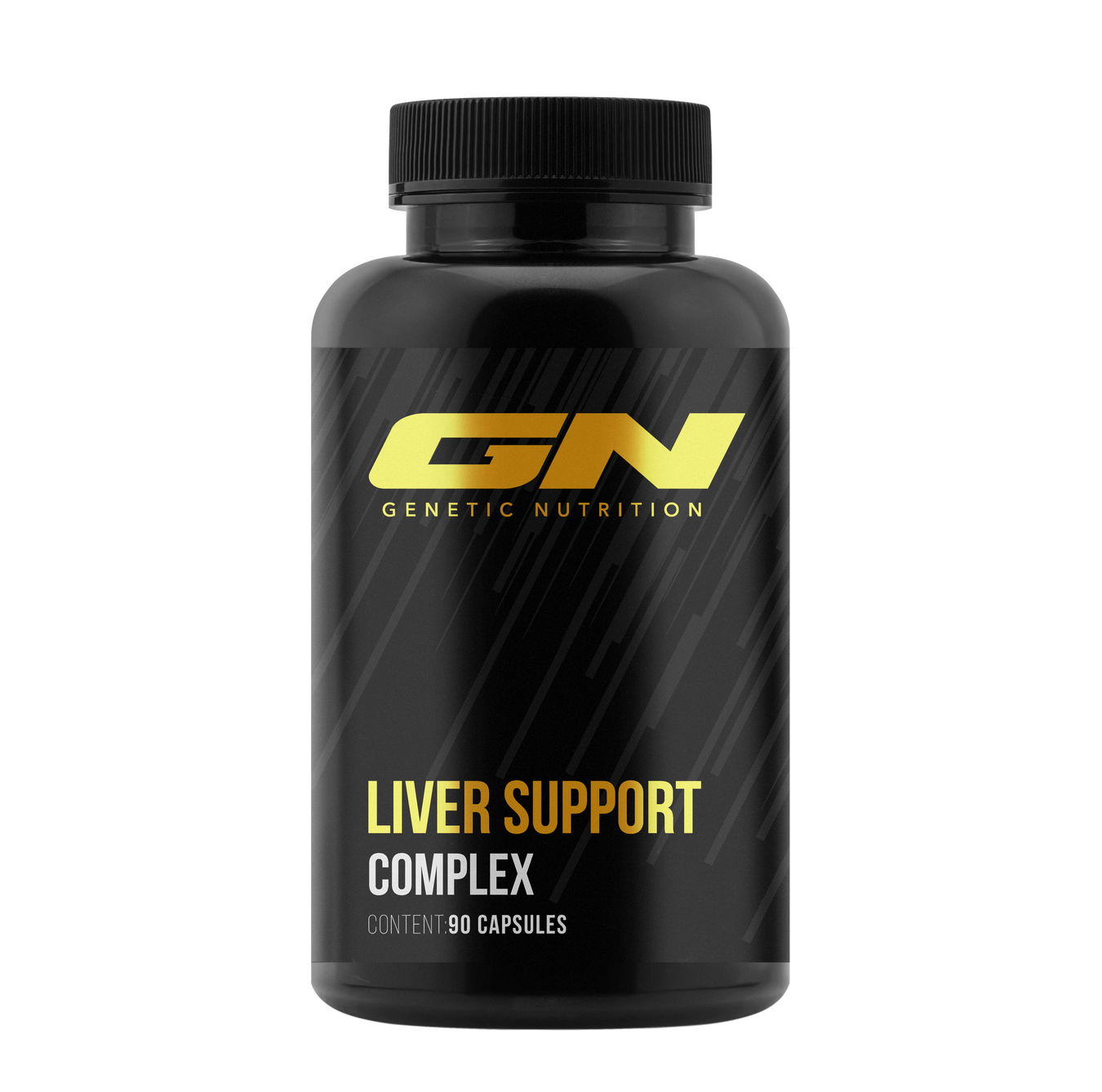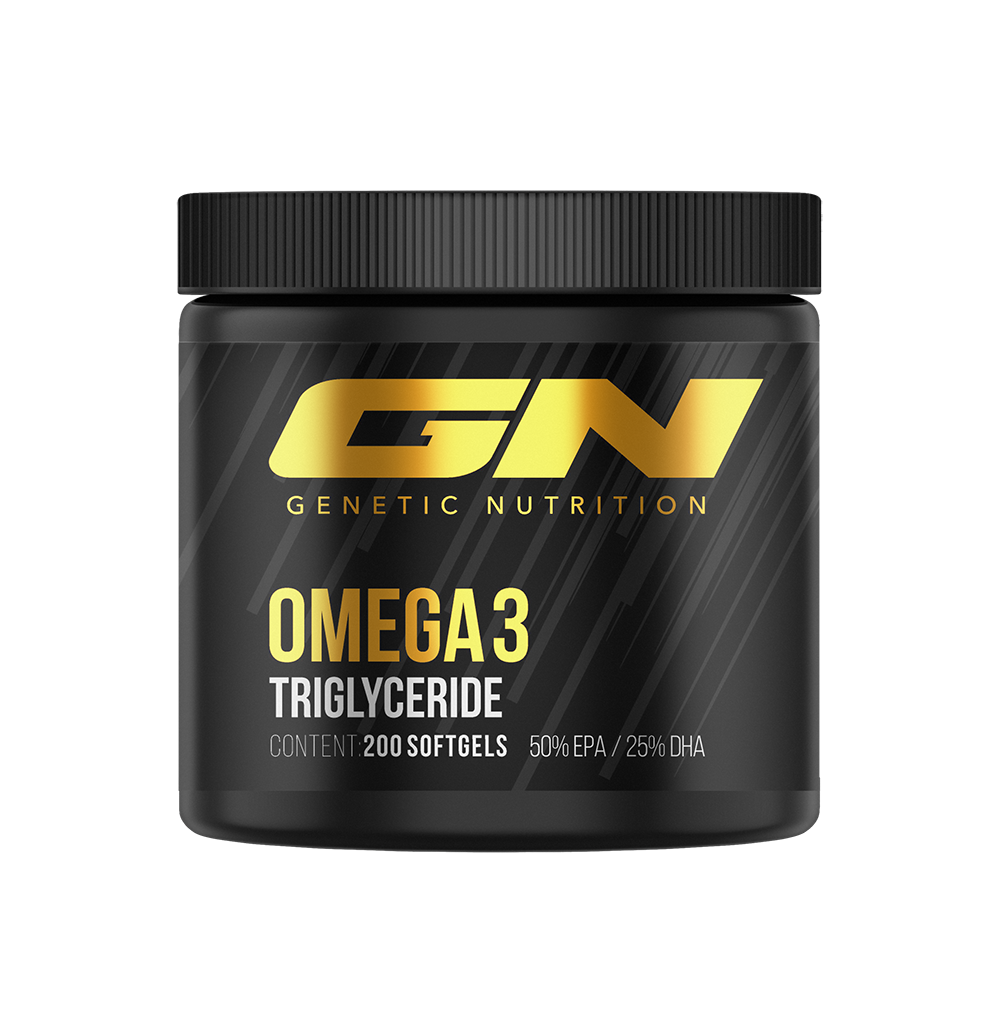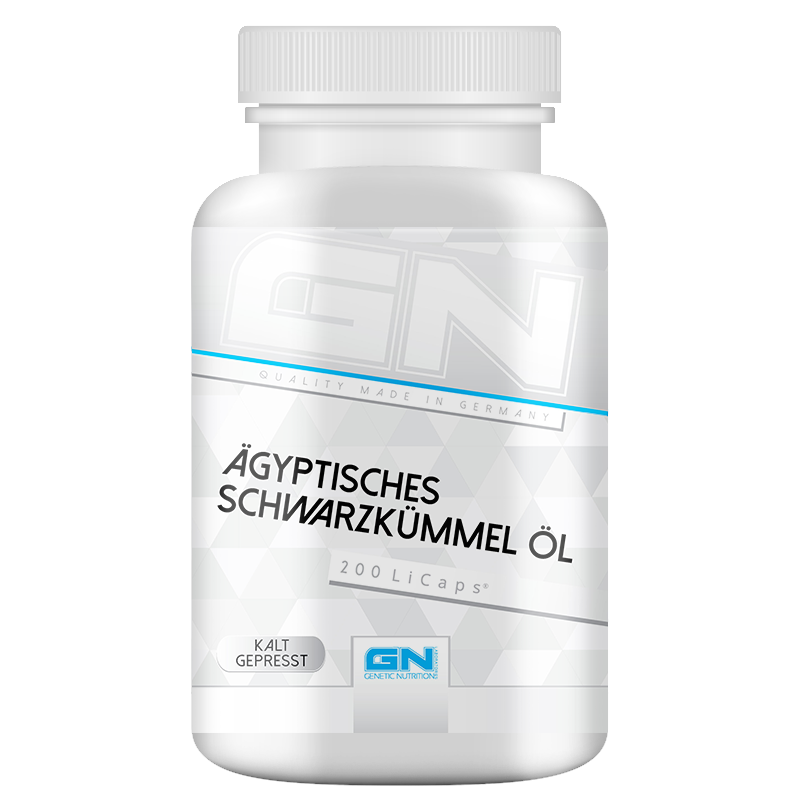Fettsäuren
Filter
-
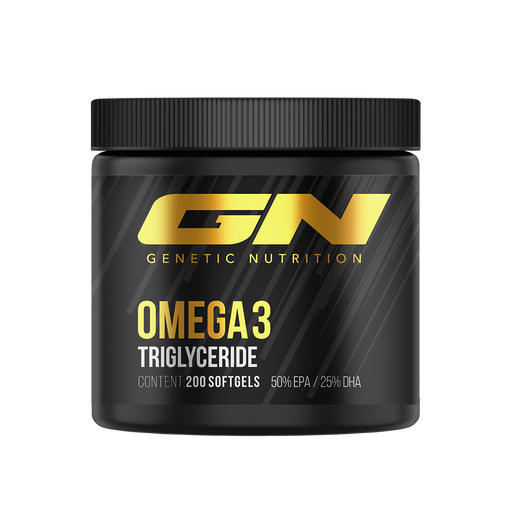 Jetzt 11% sparen
Jetzt % sparen
Original-Preis €29,90Original-Preis €29,90 - Original-Preis €29,90Original-Preis €29,90Aktueller Preis €26,61€26,61 - €26,61Aktueller Preis €26,61|/
Jetzt 11% sparen
Jetzt % sparen
Original-Preis €29,90Original-Preis €29,90 - Original-Preis €29,90Original-Preis €29,90Aktueller Preis €26,61€26,61 - €26,61Aktueller Preis €26,61|/Triglyceride Omega 3 Sport Edition · 200 Softgels
GN Laboratories77 reviewsOmega-3-Fettsäuren sind eines der Supplemente, die zuerst genannt werden, wenn es darum geht, die wichtigsten Nahrungsergänzungsmittel zu bestimmen...
Vollständige Details anzeigenOriginal-Preis €29,90Original-Preis €29,90 - Original-Preis €29,90Original-Preis €29,90Aktueller Preis €26,61€26,61 - €26,61Aktueller Preis €26,61|/Jetzt 11% sparen Jetzt % sparen -
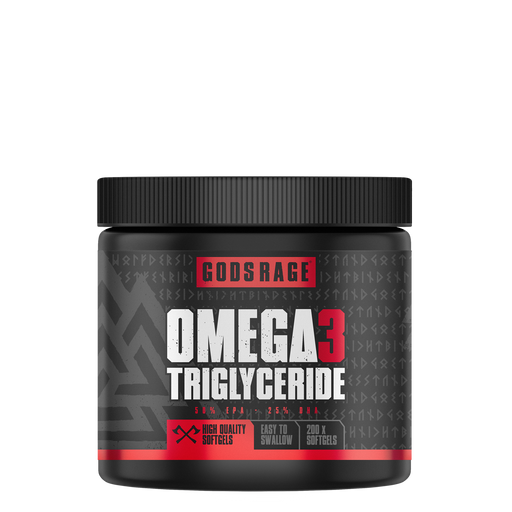 Jetzt 17% sparen
Jetzt % sparen
Original-Preis €29,90Original-Preis €29,90 - Original-Preis €29,90Original-Preis €29,90Aktueller Preis €24,90€24,90 - €24,90Aktueller Preis €24,90|/
Jetzt 17% sparen
Jetzt % sparen
Original-Preis €29,90Original-Preis €29,90 - Original-Preis €29,90Original-Preis €29,90Aktueller Preis €24,90€24,90 - €24,90Aktueller Preis €24,90|/Omega 3 Triglyceride · 200 Softgels
Gods Rage27 reviewsOmega-3-Fettsäuren haben zahlreiche Vorteile für deine Gesundheit. Sie haben eine positive Wirkung für Herz, Gehirn und Sehkraft und helfen so dein...
Vollständige Details anzeigenOriginal-Preis €29,90Original-Preis €29,90 - Original-Preis €29,90Original-Preis €29,90Aktueller Preis €24,90€24,90 - €24,90Aktueller Preis €24,90|/Jetzt 17% sparen Jetzt % sparen -
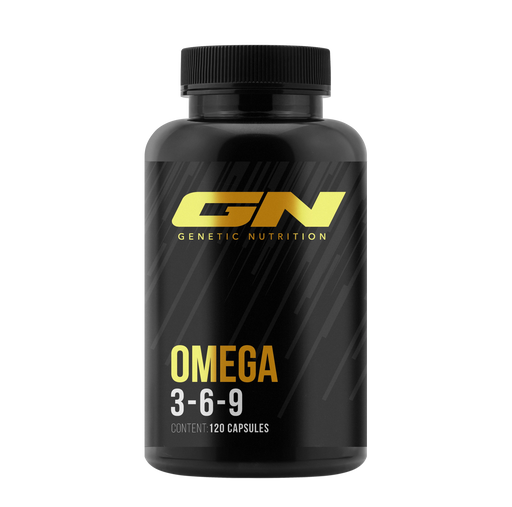 Jetzt 11% sparen
Jetzt % sparen
Original-Preis €19,90Original-Preis €19,90 - Original-Preis €19,90Original-Preis €19,90Aktueller Preis €17,71€17,71 - €17,71Aktueller Preis €17,71|/
Jetzt 11% sparen
Jetzt % sparen
Original-Preis €19,90Original-Preis €19,90 - Original-Preis €19,90Original-Preis €19,90Aktueller Preis €17,71€17,71 - €17,71Aktueller Preis €17,71|/Omega 3-6-9 · 120 Kapseln
GN Laboratories5 reviewsOmega-3-Fettsäuren sind jedem als Supplement bekannt, allerdings sind das nicht die einzigen Fettsäuren, die der Körper für eine ganze Reihe wichti...
Vollständige Details anzeigenOriginal-Preis €19,90Original-Preis €19,90 - Original-Preis €19,90Original-Preis €19,90Aktueller Preis €17,71€17,71 - €17,71Aktueller Preis €17,71|/Jetzt 11% sparen Jetzt % sparen -
 Jetzt 11% sparen
Jetzt % sparen
Original-Preis €32,90Original-Preis €32,90 - Original-Preis €32,90Original-Preis €32,90Aktueller Preis €29,28€29,28 - €29,28Aktueller Preis €29,28|/
Jetzt 11% sparen
Jetzt % sparen
Original-Preis €32,90Original-Preis €32,90 - Original-Preis €32,90Original-Preis €32,90Aktueller Preis €29,28€29,28 - €29,28Aktueller Preis €29,28|/Omega 3 · 400 Kapseln
PEAK3 reviewsHochwertiges (See-)Fischöl in leicht schluckbaren Softgel-Kapseln Unkomplizierte Einnahme lebensnotwendiger Omega-3-Fettsäuren Dank hoher Dosierun...
Vollständige Details anzeigenOriginal-Preis €32,90Original-Preis €32,90 - Original-Preis €32,90Original-Preis €32,90Aktueller Preis €29,28€29,28 - €29,28Aktueller Preis €29,28|/Jetzt 11% sparen Jetzt % sparen -
 Jetzt 11% sparen
Jetzt % sparen
Original-Preis €44,90Original-Preis €44,90 - Original-Preis €44,90Original-Preis €44,90Aktueller Preis €39,96€39,96 - €39,96Aktueller Preis €39,96|/
Jetzt 11% sparen
Jetzt % sparen
Original-Preis €44,90Original-Preis €44,90 - Original-Preis €44,90Original-Preis €44,90Aktueller Preis €39,96€39,96 - €39,96Aktueller Preis €39,96|/Omega 3 Fury Triglyceride · 300 Kapseln
Big Zone7 reviewsfür das Immunsystem für die Produktion von Hormonen für die Proteinsynthese für die Gelenke gegen Entzündungen für die Netzhaut im Auge gegen Herz...
Vollständige Details anzeigenOriginal-Preis €44,90Original-Preis €44,90 - Original-Preis €44,90Original-Preis €44,90Aktueller Preis €39,96€39,96 - €39,96Aktueller Preis €39,96|/Jetzt 11% sparen Jetzt % sparen -
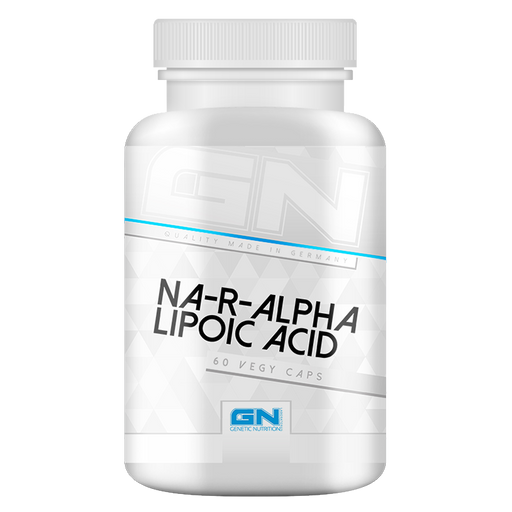 Jetzt 20% sparen
Jetzt % sparen
Original-Preis €24,90Original-Preis €24,90 - Original-Preis €24,90Original-Preis €24,90Aktueller Preis €19,90€19,90 - €19,90Aktueller Preis €19,90|/
Jetzt 20% sparen
Jetzt % sparen
Original-Preis €24,90Original-Preis €24,90 - Original-Preis €24,90Original-Preis €24,90Aktueller Preis €19,90€19,90 - €19,90Aktueller Preis €19,90|/NA-R-ALA · 60 Kapseln
GN Laboratories7 reviewsAlpha Liponsäure in ihrer wirkungsvollsten Form für antioxidativen Schutz, gesteigerte Energie, eine schnellere Regeneration nach dem Training, ges...
Vollständige Details anzeigenOriginal-Preis €24,90Original-Preis €24,90 - Original-Preis €24,90Original-Preis €24,90Aktueller Preis €19,90€19,90 - €19,90Aktueller Preis €19,90|/Jetzt 20% sparen Jetzt % sparen -
 Jetzt 11% sparen
Jetzt % sparen
Original-Preis €23,90Original-Preis €23,90 - Original-Preis €23,90Original-Preis €23,90Aktueller Preis €21,27€21,27 - €21,27Aktueller Preis €21,27|/
Jetzt 11% sparen
Jetzt % sparen
Original-Preis €23,90Original-Preis €23,90 - Original-Preis €23,90Original-Preis €23,90Aktueller Preis €21,27€21,27 - €21,27Aktueller Preis €21,27|/Omega 3 Fury Triglyceride · 120 Kapseln
Big Zone3 reviewsDoch wozu werden Omega 3 Fettsäuren konkret benötigt? für das Immunsystem für die Produktion von Hormonen für die Proteinsynthese für die Gelenke ...
Vollständige Details anzeigenOriginal-Preis €23,90Original-Preis €23,90 - Original-Preis €23,90Original-Preis €23,90Aktueller Preis €21,27€21,27 - €21,27Aktueller Preis €21,27|/Jetzt 11% sparen Jetzt % sparen -
 Jetzt 11% sparen
Jetzt % sparen
Original-Preis €17,90Original-Preis €17,90 - Original-Preis €17,90Original-Preis €17,90Aktueller Preis €15,93€15,93 - €15,93Aktueller Preis €15,93|/
Jetzt 11% sparen
Jetzt % sparen
Original-Preis €17,90Original-Preis €17,90 - Original-Preis €17,90Original-Preis €17,90Aktueller Preis €15,93€15,93 - €15,93Aktueller Preis €15,93|/Gold Omega 3 Sport Edition · 120 Kapseln
Olimp Sport Nutrition3 reviewsHochwertiges Nahrungsergänzungsmittel: Olimp Gold Omega 3 Sport Edition mit essentiellen Omega-3-Fettsäuren. Omega-3-reich: 65% EPA und DHA aus...
Vollständige Details anzeigenOriginal-Preis €17,90Original-Preis €17,90 - Original-Preis €17,90Original-Preis €17,90Aktueller Preis €15,93€15,93 - €15,93Aktueller Preis €15,93|/Jetzt 11% sparen Jetzt % sparen -
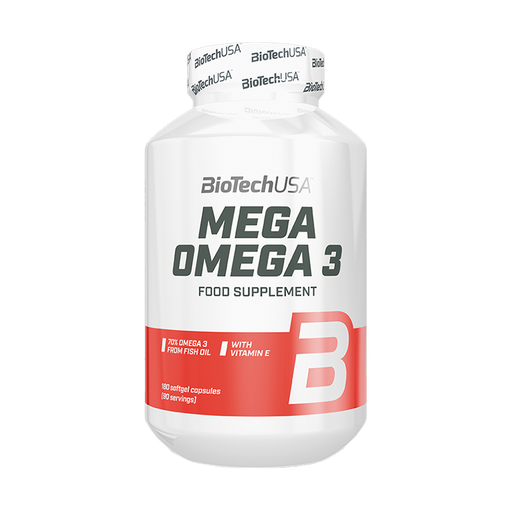 Jetzt 11% sparen
Jetzt % sparen
Original-Preis €21,90Original-Preis €21,90 - Original-Preis €21,90Original-Preis €21,90Aktueller Preis €19,49€19,49 - €19,49Aktueller Preis €19,49|/
Jetzt 11% sparen
Jetzt % sparen
Original-Preis €21,90Original-Preis €21,90 - Original-Preis €21,90Original-Preis €21,90Aktueller Preis €19,49€19,49 - €19,49Aktueller Preis €19,49|/Mega Omega 3 · 180 Kapseln
Biotech USANo reviews1000 mg Fischöl pro Portion Mit 70% EPA und DHA Omega-3-Fettsäureanteil Mit Zusatz von Vitamin E Softgel-Kapselform
Original-Preis €21,90Original-Preis €21,90 - Original-Preis €21,90Original-Preis €21,90Aktueller Preis €19,49€19,49 - €19,49Aktueller Preis €19,49|/Jetzt 11% sparen Jetzt % sparen -
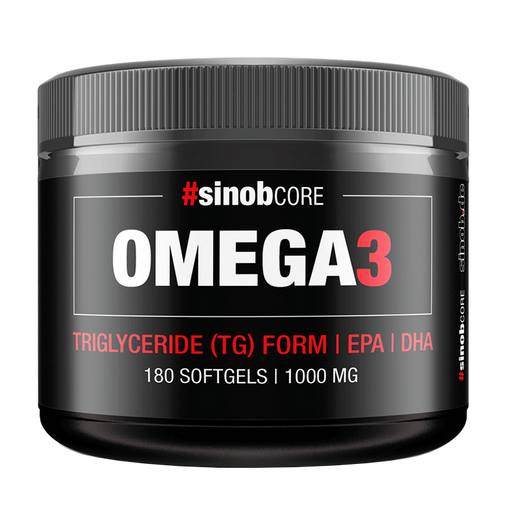 Jetzt 11% sparen
Jetzt % sparen
Original-Preis €15,90Original-Preis €15,90 - Original-Preis €15,90Original-Preis €15,90Aktueller Preis €14,15€14,15 - €14,15Aktueller Preis €14,15|/
Jetzt 11% sparen
Jetzt % sparen
Original-Preis €15,90Original-Preis €15,90 - Original-Preis €15,90Original-Preis €15,90Aktueller Preis €14,15€14,15 - €14,15Aktueller Preis €14,15|/Core Omega 3 · 180 Softgels
#sinob2 reviewsGesundheit von Seefisch: Fetter Seefisch wie Lachs ist gesund, aber oft mit Schadstoffen belastet und teuer. Omega-3-Fettsäuren: Wichtig für di...
Vollständige Details anzeigenOriginal-Preis €15,90Original-Preis €15,90 - Original-Preis €15,90Original-Preis €15,90Aktueller Preis €14,15€14,15 - €14,15Aktueller Preis €14,15|/Jetzt 11% sparen Jetzt % sparen -
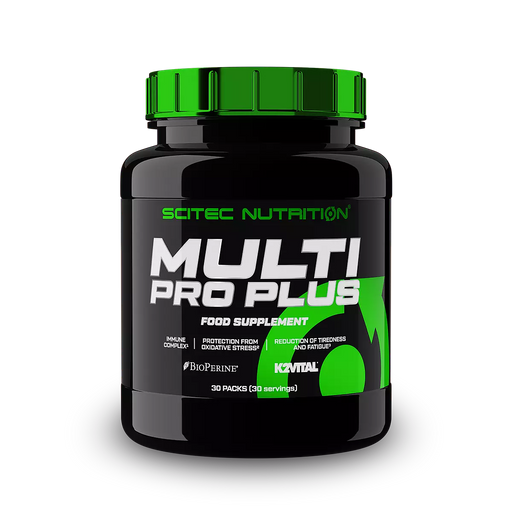 Jetzt 11% sparen
Jetzt % sparen
Original-Preis €25,90Original-Preis €25,90 - Original-Preis €25,90Original-Preis €25,90Aktueller Preis €23,05€23,05 - €23,05Aktueller Preis €23,05|/
Jetzt 11% sparen
Jetzt % sparen
Original-Preis €25,90Original-Preis €25,90 - Original-Preis €25,90Original-Preis €25,90Aktueller Preis €23,05€23,05 - €23,05Aktueller Preis €23,05|/Multi-Pro Plus · 30 Packets
SCITEC Nutrition2 reviewsMULTI PRO ist eine professionelle Multivitamin- & Mineralstoffrezeptur in einem Paket aus sechs Tabletten/Kapseln. Vitamine und Mineralstoffe ...
Vollständige Details anzeigenOriginal-Preis €25,90Original-Preis €25,90 - Original-Preis €25,90Original-Preis €25,90Aktueller Preis €23,05€23,05 - €23,05Aktueller Preis €23,05|/Jetzt 11% sparen Jetzt % sparen -
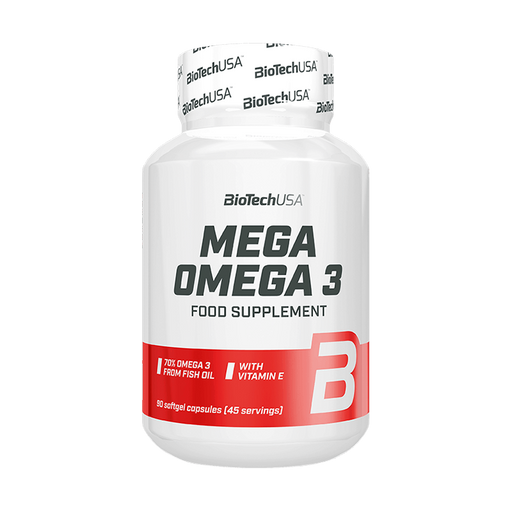 Jetzt 11% sparen
Jetzt % sparen
Original-Preis €12,90Original-Preis €12,90 - Original-Preis €12,90Original-Preis €12,90Aktueller Preis €11,48€11,48 - €11,48Aktueller Preis €11,48|/
Jetzt 11% sparen
Jetzt % sparen
Original-Preis €12,90Original-Preis €12,90 - Original-Preis €12,90Original-Preis €12,90Aktueller Preis €11,48€11,48 - €11,48Aktueller Preis €11,48|/Mega Omega 3 · 90 Kapseln
Biotech USA1 reviewSoftgel-Kapseln enthalten Omega-3-Fettsäure aus Fischöl Eine Portion enthält 1000 mg Fischöl, 400 mg EPA und 300 mg DHA EPA und DHA tragen zur Her...
Vollständige Details anzeigenOriginal-Preis €12,90Original-Preis €12,90 - Original-Preis €12,90Original-Preis €12,90Aktueller Preis €11,48€11,48 - €11,48Aktueller Preis €11,48|/Jetzt 11% sparen Jetzt % sparen -
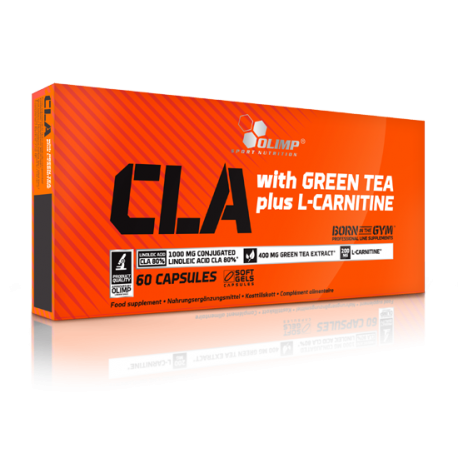 Jetzt 11% sparen
Jetzt % sparen
Original-Preis €24,90Original-Preis €24,90 - Original-Preis €24,90Original-Preis €24,90Aktueller Preis €22,16€22,16 - €22,16Aktueller Preis €22,16|/
Jetzt 11% sparen
Jetzt % sparen
Original-Preis €24,90Original-Preis €24,90 - Original-Preis €24,90Original-Preis €24,90Aktueller Preis €22,16€22,16 - €22,16Aktueller Preis €22,16|/CLA & Green Tea Plus L-Carnitine · 60 Kapseln
Olimp Sport NutritionNo reviewsOlimp CLA & Green Tea Plus L-Carnitine unterstützt den Fettabbau. Die Kombination von CLA, grünem Tee und L-Carnitin beschleunigt den Fettabba...
Vollständige Details anzeigenOriginal-Preis €24,90Original-Preis €24,90 - Original-Preis €24,90Original-Preis €24,90Aktueller Preis €22,16€22,16 - €22,16Aktueller Preis €22,16|/Jetzt 11% sparen Jetzt % sparen -
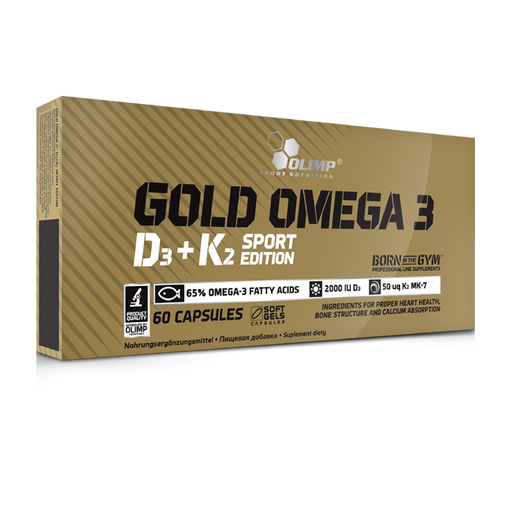 Jetzt 11% sparen
Jetzt % sparen
Original-Preis €19,90Original-Preis €19,90 - Original-Preis €19,90Original-Preis €19,90Aktueller Preis €17,71€17,71 - €17,71Aktueller Preis €17,71|/
Jetzt 11% sparen
Jetzt % sparen
Original-Preis €19,90Original-Preis €19,90 - Original-Preis €19,90Original-Preis €19,90Aktueller Preis €17,71€17,71 - €17,71Aktueller Preis €17,71|/Gold Omega 3 D3+K2 Sport Edition · 60 Kapseln
Olimp Sport NutritionNo reviewsProdukt: Gold Omega 3 D3+K2 Sport Edition - reichhaltiges Nahrungsergänzungsmittel mit Omega-3, Vitamin D3 und K2. Omega-3: Aus Kaltwasserfisch...
Vollständige Details anzeigenOriginal-Preis €19,90Original-Preis €19,90 - Original-Preis €19,90Original-Preis €19,90Aktueller Preis €17,71€17,71 - €17,71Aktueller Preis €17,71|/Jetzt 11% sparen Jetzt % sparen -
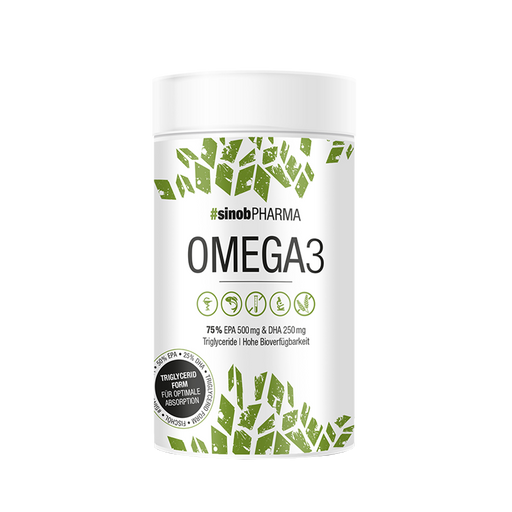 Jetzt 11% sparen
Jetzt % sparen
Original-Preis €24,90Original-Preis €24,90 - Original-Preis €24,90Original-Preis €24,90Aktueller Preis €22,16€22,16 - €22,16Aktueller Preis €22,16|/
Jetzt 11% sparen
Jetzt % sparen
Original-Preis €24,90Original-Preis €24,90 - Original-Preis €24,90Original-Preis €24,90Aktueller Preis €22,16€22,16 - €22,16Aktueller Preis €22,16|/Omega-3 MAX · 120 Liquid Caps
#sinob1 review#sinob Omega 3-Kapseln für Gesundheit und Wohlbefinden. Omega 3 in natürlicher Triglyceridform, ohne Vitamin E. Hoher Gehalt von 50% EPA und 25% D...
Vollständige Details anzeigenOriginal-Preis €24,90Original-Preis €24,90 - Original-Preis €24,90Original-Preis €24,90Aktueller Preis €22,16€22,16 - €22,16Aktueller Preis €22,16|/Jetzt 11% sparen Jetzt % sparen -
 Jetzt 11% sparen
Jetzt % sparen
Original-Preis €26,90Original-Preis €26,90 - Original-Preis €26,90Original-Preis €26,90Aktueller Preis €23,94€23,94 - €23,94Aktueller Preis €23,94|/
Jetzt 11% sparen
Jetzt % sparen
Original-Preis €26,90Original-Preis €26,90 - Original-Preis €26,90Original-Preis €26,90Aktueller Preis €23,94€23,94 - €23,94Aktueller Preis €23,94|/ALA 200 · 120 Kapseln
Olimp Sport Nutrition1 reviewNahrungsergänzungsmittel mit Alpha-Lipon-Säure Verbesserung der Energieproduktion Schutz vor den negativen Folgen der Oxidation Antioxidative Wirk...
Vollständige Details anzeigenOriginal-Preis €26,90Original-Preis €26,90 - Original-Preis €26,90Original-Preis €26,90Aktueller Preis €23,94€23,94 - €23,94Aktueller Preis €23,94|/Jetzt 11% sparen Jetzt % sparen -
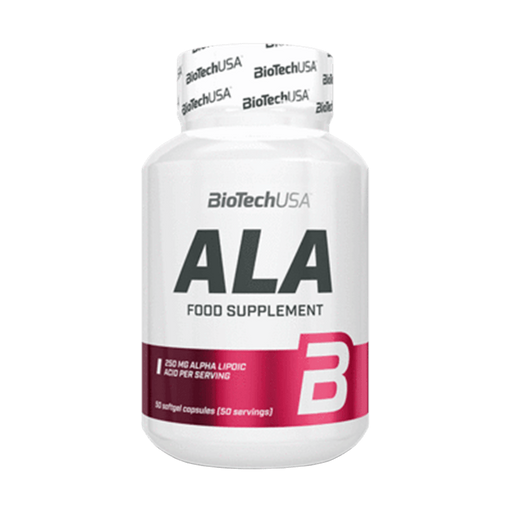 Jetzt 11% sparen
Jetzt % sparen
Original-Preis €9,90Original-Preis €9,90 - Original-Preis €9,90Original-Preis €9,90Aktueller Preis €8,81€8,81 - €8,81Aktueller Preis €8,81|/
Jetzt 11% sparen
Jetzt % sparen
Original-Preis €9,90Original-Preis €9,90 - Original-Preis €9,90Original-Preis €9,90Aktueller Preis €8,81€8,81 - €8,81Aktueller Preis €8,81|/ALA · 50 Kapseln
Biotech USANo reviewsAlpha-Liponsäure ist ein vitaminähnliches Antioxidans Es löst sich sowohl in Fett als auch in Wasser auf und wirkt im gesamten Körper Eine täglich...
Vollständige Details anzeigenOriginal-Preis €9,90Original-Preis €9,90 - Original-Preis €9,90Original-Preis €9,90Aktueller Preis €8,81€8,81 - €8,81Aktueller Preis €8,81|/Jetzt 11% sparen Jetzt % sparen -
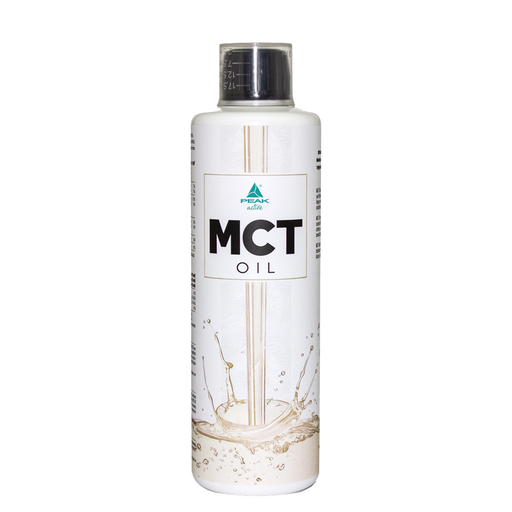 Jetzt 0% sparen
Jetzt % sparen
Original-Preis €14,90 - Original-Preis €14,90Original-Preis €14,90€14,90€14,90 - €14,90Aktueller Preis €14,90|/
Jetzt 0% sparen
Jetzt % sparen
Original-Preis €14,90 - Original-Preis €14,90Original-Preis €14,90€14,90€14,90 - €14,90Aktueller Preis €14,90|/MCT Oil · 500ml
PEAK1 reviewMCT-Öl mit 98% mittelkettigen Triglyceriden für effektive Energie. Vielseitig nutzbar: Kochen, Backen, Anbraten. Ideal als Diät-Energiequelle durc...
Vollständige Details anzeigenOriginal-Preis €14,90 - Original-Preis €14,90Original-Preis €14,90€14,90€14,90 - €14,90Aktueller Preis €14,90|/Jetzt 0% sparen Jetzt % sparen -
 Jetzt 0% sparen
Jetzt % sparen
Original-Preis €24,90 - Original-Preis €24,90Original-Preis €24,90€24,90€24,90 - €24,90Aktueller Preis €24,90|/
Jetzt 0% sparen
Jetzt % sparen
Original-Preis €24,90 - Original-Preis €24,90Original-Preis €24,90€24,90€24,90 - €24,90Aktueller Preis €24,90|/Carnitine + CLA · 120g
Stacker 22 reviewsL-Carnitin und CLA sind Schlüsselelemente im Fettsäurestoffwechsel. L-Carnitin transportiert Fettsäuren zu den Mitochondrien zur Energiegewinnung...
Vollständige Details anzeigenOriginal-Preis €24,90 - Original-Preis €24,90Original-Preis €24,90€24,90€24,90 - €24,90Aktueller Preis €24,90|/Jetzt 0% sparen Jetzt % sparen -
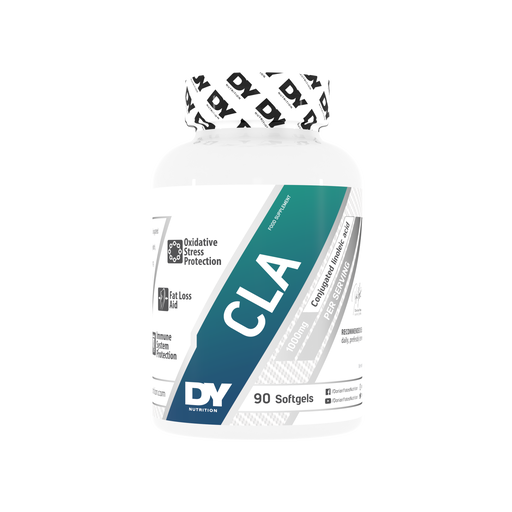 Jetzt 11% sparen
Jetzt % sparen
Original-Preis €17,90Original-Preis €17,90 - Original-Preis €17,90Original-Preis €17,90Aktueller Preis €15,93€15,93 - €15,93Aktueller Preis €15,93|/
Jetzt 11% sparen
Jetzt % sparen
Original-Preis €17,90Original-Preis €17,90 - Original-Preis €17,90Original-Preis €17,90Aktueller Preis €15,93€15,93 - €15,93Aktueller Preis €15,93|/CLA · 90 Softgels
DY NutritionNo reviewsCLA unterstützt effektiv den Fettabbau und ist bewährt durch empirische Belege. Extrahiert aus Saflorpflanzen, liefert 1000mg modifizierte Omega-...
Vollständige Details anzeigenOriginal-Preis €17,90Original-Preis €17,90 - Original-Preis €17,90Original-Preis €17,90Aktueller Preis €15,93€15,93 - €15,93Aktueller Preis €15,93|/Jetzt 11% sparen Jetzt % sparen -
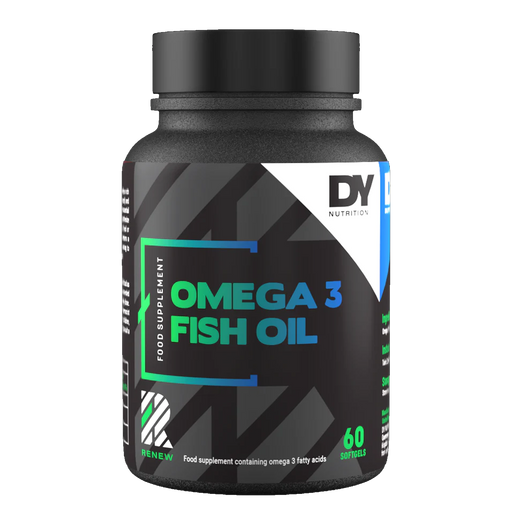 Jetzt 11% sparen
Jetzt % sparen
Original-Preis €16,90Original-Preis €16,90 - Original-Preis €16,90Original-Preis €16,90Aktueller Preis €15,04€15,04 - €15,04Aktueller Preis €15,04|/
Jetzt 11% sparen
Jetzt % sparen
Original-Preis €16,90Original-Preis €16,90 - Original-Preis €16,90Original-Preis €16,90Aktueller Preis €15,04€15,04 - €15,04Aktueller Preis €15,04|/Omega-3 Fish Oil · 60 Softgels
DY Nutrition1 reviewHochdosierte Omega-3-Fettsäuren: Bietet 330mg EPA und 220mg DHA pro Weichkapsel zur Unterstützung von Gehirn, Herz und Augengesundheit. Qualitä...
Vollständige Details anzeigenOriginal-Preis €16,90Original-Preis €16,90 - Original-Preis €16,90Original-Preis €16,90Aktueller Preis €15,04€15,04 - €15,04Aktueller Preis €15,04|/Jetzt 11% sparen Jetzt % sparen
Was sind Fettsäuren?
Fettsäuren, die zu den Lipiden gezählt werden, sind aliphatische Monocarbonsäuren und abhängig von ihren Doppelbindungen entscheidet sich ob es sich um eine Omega 3 oder eine Omega 6 Fettsäure handelt. Außerdem sind Fettsäuren Bestandteile von Fetten und Ölen und können im Guten wie im Schlechten Einfluss auf unsere Gesundheit haben. Das hängt dann davon ab, ob gute oder schlechte Fette zu sich genommen werden.
Was ist der Unterschied zwischen gesättigten und ungesättigten Fettsäuren?
Gesättigte Fettsäuren
Eine gesättigte Fettsäure ist eine Fettsäure, welche keine Doppelbindung zwischen C-Atomen aufweist. Diese Fettsäuren sind besonders häufig in Fleisch- und Milchprodukten wie Vollmilch, Käse, Butter und Sahne vorhanden. Außerdem findet man sie viel in Backwaren wie zum Beispiel Pizza oder Kuchen. Wenn also von “schlechten” Fettsäuren die Rede ist, sind vor allem die tierischen Fette gemeint. Schlecht sind sie deshalb, da sie bei übermäßigem Konsum das Risiko der Arterienverkalkung steigern und zu einem Anstieg des gesundheitsgefährdenden LDL-Cholesterin beiträgt.
Ungesättigte Fettsäuren
Ungesättigte Fettsäuren besitzen mindestens eine C=C Doppelbindung, die mehrfach ungesättigten Fettsäuren besitzen zwei oder mehr Bindungen zwischen den Kohlenstoff Atomen und der Kette. Einige der ungesättigten Fettsäuren sind für den Körper essentiell, da sie auf herkömmlichen Wege nicht vom Körper synthetisiert werden können. Ungesättigte Fettsäuren sind zum Beispiel in Olivenöl, Rapsöl, Avocados und in Nüssen enthalten.
Warum brauche ich als Sportler Fettsäuren?
Fettsäuren übernehmen zwei elementare Aufgaben für uns: Sie ermöglichen die Verwertung von fettlöslichen Vitaminen und helfen beim Aufbau von Hormonen. Fettsäuren tragen dazu bei, dass die Vitamine A,D,E und K vom Körper aufgenommen werden können. Die „guten“ Fette dienen dabei unter anderem dem Aufbau des Gehirns, der Leitfähigkeit der Nerven, dem Zellaufbau und der Produktion körpereigener Botenstoffe.
Vor allem Omega 3 Fettsäuren sind für den menschlichen Körper essentiell, da sie viele positive Auswirkungen mit sich bringen. Dazu zählen positive Effekte auf den Stoffwechsel und die sportliche Leistung. Der Sport kann länger durchgeführt werden und die Regenerationsdauer verringert sich, außerdem unterstützt Omega 3 die Fettverbrennung und den Muskelaufbau. Zusätzlich wird der Omega 3 Fettsäure eine wundheilende Wirkung zugesprochen, demnach unterstützt es den Heilungsprozess bei Mikroverletzungen, welche beispielsweise bei einem Muskelkater entstehen.
Fette enthalten verglichen mit anderen Nährstoffen die größte Energiedichte (1g Fett = 9 kcal, 1g Glucose/Eiweiß: 4 kcal) und sind deshalb ein wichtiger Energielieferant für sportliche Betätigungen. Sie haben aber den Nachteil, dass sie bei ihrer Verbrennung mehr Sauerstoff verbrennen und doppelt so viel Zeit wie beim aeroben Glucoseabbau brauchen. Dies wirkt sich aber bei Belastungen von geringer bis mittlerer Intensität nicht aus, da hierbei genügend Sauerstoff zur Verfügung steht. In Ruhe beträgt der Anteil der Energiebereitstellung bei Fetten und Kohlenhydraten jeweils 50 %.
Durch aerobes Ausdauertraining läst sich Fähigkeit der Fettverbrennung (Fettsäuretransport, b -Oxidation) verbessern, so das gut trainierte Ausdauersportler Fette nicht nur als zweite, sondern unter bestimmten Bedingungen sogar als gleichwertige Energiequelle nutzen können. Aus diesem Grund zeigt sich bei audauertrainierten Muskelfasern –eine ca. zweieinhalb größere Menge an Trigyceriden (Fetten) als in nicht ausdauertrainierten Muskelfasern. Bei vorwiegend aeroben Ausdauertätigkeiten können Fettsäuren verstärkt zur Energiegewinnung herangezogen werden und somit die Glykogenspeicher - z.B. für den Endspurt - schonen.
Gerade Leistungssportler sind darauf bedacht, sich fettarm zu ernähren, da sich ein zu hoher Fettanteil in der Nahrung leistungsmindernd (vor allem für Ausdauerleistungen) auswirkt. Die Ursache dafür dürfte die Störung des Kohlenhydratstoffwechsels in verschiedenen Ebenen sein. Außerdem können bei einem hohen Fettanteil in der Nahrung entsprechend weniger Kohlenhydrate und Eiweiße aufgenommen werden. Es wurde beobachtet, dass ein niedrigeres Körpergewicht indirekt eine Verbesserung der maximalem Ausdauerleistungsfähigkeit bedeutet. Denn je geringer das Körpergewicht wird, desto höher wird die maximale relative Sauerstoffaufnahmefähigkeit pro kg Körpergewicht – ohne zussätzlichem Training. Durch Erhöhung der fettfreien Körpermasse kann man demnach die mögliche Intensität (z.B. Tempo) der Ausdauerleistung steigern.
Bei einer normalen ausgewogenen Ernährung ist es aber nicht gerade leicht, sich fettarm zu ernähren, da nur etwa ein Drittel der Fette als "sichtbare Fette" (Pflanzenöle, Butter oder Margarine als Streichfett, sichtbares Fett in Fleisch oder Wurst) aufgenommen wird. Der überwiegende Anteil sind versteckten Fette, die direkt teilweise gar nicht wahr genommen werden, z.B. das Fett Backwaren, Mehlspeisen (z.B. Nudeln), Milchprodukten (insbesondere die sehr fetthaltigen Käsesorten) und in Süßigkeiten (Schokolade hat 30 % Fett). Es ist nicht leicht und erfordert einen starken Willen, sich auf Dauer nur von fettarmer Kost zu ernähren. Denn Aroma-, Geschmacks- und Duftstoffe sind an das Fett gebunden und entfalten mit ihm erst ihre Wirkung. Ohne Fett duftet und schmeckt das Essen also nicht mehr besonders intensiv.
Wie sollte ich die Aufnahme von Fettsäuren dosieren?
Ernährungsexperten raten Kraftsportlern dazu bis zu 35% ihres Kalorienbedarfs mit Fett zu decken, für Ausdauersportler hingegen gilt eine Quote von 20-25%. Die genaue Dosierung hängt allerdings von Alter, körperlicher Kondition und Aktivität ab. Außerdem werden Bedarf und Versorgung von dem Verhältnis von Omega 3 zu Omega 6 Fettsäuren bestimmt. Laut dem Ernährungsbericht der Deutschen Gesellschaft für Ernährung (DGE) sollte eine optimale Omega-3- zu Omega-6-Relation maximal 1:5 betragen.
| Ölsorte | gesättigte Fettsäuren | einfach ungesättigte Fettsäuren | mehrfach ungesättigte Fettsäuren Gehalt | davon Linolsäure (Omega-6-Fettsäure) | davon Linolensäure (Omega-3-Fettsäure) |
|---|---|---|---|---|---|
| Leinöl | 10 | 18 | 72 | 14 | 58 |
| Rapsöl | 13 | 56 | 31 | 19 | 9 |
| Walnussöl | 10 | 16 | 74 | 61 | 9 |
| Sojaöl | 15 | 21 | 64 | 56 | 8 |
| Olivenöl | 15 | 74 | 11 | 10 | 1 |
| Maiskeimöl | 15 | 33 | 52 | 51 | 1 |
| Sonnenblumenöl | 12 | 24 | 64 | ^63 | 1 |
| Distelöl | 10 | 13 | 77 | 76 | 1 |
| Erdnussöl | 19 | 37 | 44 | 42 | - |
Die Bedeutung von Fetten für den Körper
Mit einer Energiedichte von 38,1 kJ/g (= 9,1 kcal/g) ist Fett der wichtigste Energielieferant. Fette bestehen wie die Kohlenhydrate aus den elementaren Bausteinen Kohlenstoff (C), Wasserstoff (H) und Sauerstoff (O), im Gegensatz zu den Eiweißen haben sie keinen Stickstoffanteil (N). Bei den Nahrungsfetten handelt es sich in erster Linie um Triglyzeride und Cholesterin. Die Triglyzeride, auch Neutralfette genannt, machen den Großteil aller Nahrungsfette aus und bestehen aus Glyzerin, einem dreiwertigen Alkohol, und Fettsäuren, wobei jeweils drei Fettsäuren mittels Veresterung einem Molekül Glyzerin angelagert sind.
Sie sind das Speicherfett, welches die Depots im Körper auffüllt und auch im Pflanzenöl oder an Fleischstücken zu sehen ist. Jedes dieser Fette wird durch eine unterschiedliche Fettsäurezusammensetzung charakterisiert. Fettsäuren sind organische Säuren (Kohlenwasserstoffverbindungen), die man aufgrund der Länge der Kohlenstoffkette in kurzkettige und langkettige Fettsäuren einteilen kann. Je länger die Fettsäureketten in einem Fett, desto schwerer ist es zu verdauen oder zu schmelzen. Zum Anderen unterscheidet man anhand der Anzahl von Doppelbindungen in der Fettsäurekette zwischen gesättigten Fettsäuren, die keine Doppelbindung aufweisen (z.B. Stearinsäure, Palmitinsäure), und einfach bzw. mehrfach ungesättigten Fettsäuren mit einer (z.B. Ölsäure) oder mehr (z.B. Linolsäure) Doppelbindungen.
Mit steigender Anzahl von Doppelbindungen steigt die Reaktionsfreude des Stoffes, da die Bindungsmöglichkeiten nicht alle genutzt werden. Dies ist auch der Grund dafür, weshalb Fette mit einem großen Anteil reaktionsfreudiger ungesättigter Fettsäuren schneller verderben. Für den menschlichen Körper gilt: Die reaktionsträgen gesättigten Fettsäuren wandern zumeist direkt in die Depots, während die reaktionsfreudigeren ungesättigten bevorzugt bei den organischen Bauprozessen eingesetzt werden.
Einige der ungesättigten Fettsäuren wie die Linolsäure und die Linolensäure können vom menschlichen Organismus nicht selber synthetisiert werden, sie müssen also mit der Nahrung zugeführt werden; man spricht dann von essentiellen Fettsäuren. Der Körper ist in der Lage, aus diesen beiden die wichtigste ungesättigte Fettsäure überhaupt zu synthetisieren: die vierfach ungesättigte Arachidonsäure. Sie ist Bestandteil nahezu aller Zellmembranen und darüber hinaus Ausgangssubstanz für eine Reihe wichtiger Mediatoren mit vielfältigen Wirkungen u.a. auf Blut und Kreislauf sowie als Vermittler bestimmter Hormonwirkungen ("second messenger").
Ursprung der Fette
Fette in unseren Lebensmitteln sind unterschiedlichen Ursprungs:
Tierischer Ursprung
Fleisch und Fleischprodukte, Eier und Milchprodukte wie Butter, Käse, Milch und Sahne, sind die Hauptquellen an tierischen Fetten in Europa.
Pflanzlicher Ursprung
Fett kann in Pflanzensamen (zum Beispiel Raps, Sonnenblume, Mais), in Früchten (zum Beispiel Oliven, Avocado) und in Nüssen (zum Beispiel Erdnüsse, Mandeln) gefunden werden. Das Öl erhält man durch Waschen und Zerreiben der Samen, Früchte oder Nüsse. Während des Erhitzens kann das Öl durch einen Extraktionsprozess abgetrennt werden. Es wird dann raffiniert, um unerwünschte Geschmackstoffe, Gerüche, Farben und Verunreinigungen zu entfernen. Einige Öle wie kalt gepresstes Olivenöl, Walnussöl und Traubenkernöl werden ohne weiteren Raffinierungsprozess direkt aus dem Samen oder der Frucht gepresst.
Die Hauptversorgung für den europäischen Ölmarkt kommt von:
- Einjährigen angebauten Ölpflanzen, zum Beispiel Raps, Sonnenblumen, Soja, Mais und Erdnüsse.
- Baumfrüchten wie Olive, Palme, Kakao und Kokosnuss.
Fette können in natürlicher Form in Lebensmitteln wie fettigem Fleisch, öligem Fisch, Eigelb, Käse, voll- und halbentrahmter Milch vorkommen oder während der Essenszubereitung zugefügt werden. Das kann zu Hause oder schon durch den Lebensmittelhersteller erfolgen, zum Beispiel bei der Herstellung von Kuchen, Keksen, Gebäck, pikanten Knabbereien, Fleischprodukten oder Mayonnaise. Öle und Fette können klar ersichtlich in Lebensmitteln vorkommen (zum Beispiel Back- und Salatöl, Butter, andere Brotaufstriche, Sahne und das sichtbare Fett am Fleisch) oder mit anderen Komponenten gemischt und damit für den Konsumenten weniger ersichtlich sein. Etwa 70 Prozent der durchschnittlichen Fettaufnahme wird durch so genannte „versteckte“ Fette gespeist. Das Wissen um die Fette und das Lesen von Lebensmitteletiketten können einen wichtigen Beitrag für eine gesunde und ausgewogene Ernährung leisten.
Fettstruktur
Um die Rolle der Fette für unsere Gesundheit und in der Lebensmittelproduktion zu verstehen, sollte man die Chemie der Fette kennen. Über 90 Prozent der Fette in der Nahrung und im Körper sind Triglyzeride. Cholesterin, Wachse und Phospholipide teilen sich die restlichen zehn Prozent.
Triglyzeride
Alle Triglyzeride besitzen eine gabelartige Struktur aus Glyzerin und drei Fettsäuren.
Fettsäuren
Fettsäuren variieren in der Länge ihrer Kohlenstoffkette (von 4 bis 22 Bausteinen) und in der Anzahl ihrer Doppelbindungen. Zum Beispiel enthalten Buttersäure (C4:0), Palmitinsäure (C16:0) und Arachinsäure (C20:0) 4, 16 beziehungsweise 20 Kohlenstoffatome in ihren Ketten. Die meisten Fettsäuren in unserer Ernährung und unserem Körper enthalten 16 bis 18 Kohlenstoffatome (siehe Anhang: Liste der am meisten verbreiteten Fettsäuren). Fettsäuren werden nach der Anzahl ihrer Doppelbindungen klassifiziert. Gesättigte Fette enthalten keine, einfach ungesättigte Fette enthalten eine und mehrfach ungesättigte Fette enthalten zwei oder mehr Doppelbindungen.
Omega-6- und Omega-3-Fettsäuren
Mehrfach ungesättigte Fettsäuren werden je nach der Position der ersten Doppelbindung weiter in zwei Familien eingeteilt:
- Omega-6 (oder n-6) Fettsäuren haben die erste Doppelbindung am sechsten Kohlenstoffatom entlang der Fettsäurenkette und leiten sich hauptsächlich von der Linolsäure ab.
- Omega-3 (oder n-3) Fettsäuren haben die erste Doppelbindung am dritten Kohlenstoffatom entlang der Fettsäurenkette und leiten sich hauptsächlich von der Alpha-Linolensäure ab.
Zusätzlich zu ihrem eigentlichen Namen werden Fettsäuren häufig durch einen verkürzten Zahlennamen dargestellt, der auf der Zahl der Kohlenstoffatome, der Zahl der Doppelbindungen und der zugehörigen Omega-Klasse basiert. Zum Beispiel wird Linolsäure durch C18:2 n-6 abgekürzt. Dies zeigt an, dass Linolsäure 18 Kohlenstoffatome und zwei Doppelbindungen besitzt und zur n-6 bzw. Omega-6-Familie gehört. Alpha-Linolensäure wird mit C18:3 n-3 abgekürzt: sie hat 18 Kohlenstoffatome, 3 Doppelbindungen und gehört zur n-3 bzw. Omega-3-Familie.
Essentielle Fettsäuren
Die essentiellen Fettsäuren Linolsäure (Omega-6 Fettsäure) und Alpha-Linolensäure (Omega-3 Fettsäure) können nicht vom Körper hergestellt werden und müssen daher mit der Nahrung aufgenommen werden. Sie sind wichtig für Wachstum, Entwicklung und Gesundheit. Auch wenn der Körper diese zwei Fettsäuren nicht herstellen kann - in längere Kettenversionen umwandeln kann er sie. Diese längeren Kettenversionen sind die Bausteine von Eicosanoiden, den Vorstufen einiger Hormone (zum Beispiel Prostaglandine).
Diese hormonähnlichen Substanzen haben eine große Bedeutung beim Aufbau von Zellmembranen sowie bei der Blutgerinnung, Wundheilung und bei Entzündungen. Obwohl der Körper in der Lage ist, Alpha-Linolensäure in die lange Kettenversion EPA (Eicosapentaenylsäure) und in geringerem Ausmaß zu DHA (Docosahexaenylsäure) umzuwandeln, scheint diese Umwandlung begrenzt zu sein. Aus diesem Grund benötigen wir auch direkte Quellen dieser langkettigen Omega-3-Fette in unserer Ernährung. Die reichste Quelle an diesen Fettsäuren ist fettreicher Fisch.
Cis- und trans-Fettsäuren
Ungesättigte Fettsäuren können je nach Molekülstruktur auch als "cis" (geknickte Form) oder "trans" (geradlinige Form) unterteilt werden. Die meisten ungesättigten Fettsäuren in der Ernährung existieren in der cis-Form. Im Fleisch und in der Milch von Wiederkäuern (z.B. Rind, Schaf) und in Produkten mit industriell veränderten Ölen, die einem Härtungsprozess - der partiellen Hydrierung - unterzogen wurden, liegt ein gewisser Anteil der ungesättigten Fettsäuren in der trans-Form vor.
Funktion im Körper
Nahrungsfette sind aufgrund ihrer hohen Energiedichte der Energieträger Nummer 1: Fette liefern mehr als die doppelte Menge Energie wie Kohlenhydrate oder Eiweiße. Der unmittelbare Energiebedarf wird allerdings in der Regel durch Kohlenhydrate gedeckt, da die Fettverbrennung, die sog. Lipolyse, trotz des höheren Energie-Gewinns für den Organismus aufwendiger ist. Jegliches zuviel an Energie, was über die Nahrung zugeführt wird, speichert der Körper in Depots, so werden die nicht verbrannten Fette vom Körper als Depot- und als Baufett gespeichert. Diese Energiespeicherform ist sehr gewichts- und platzsparend. Hätte beispielsweise ein Vogel seinen Energievorrat in Kohlenhydraten statt in Depotfett angelegt, könnte er nicht vom Boden abheben.
Während längerer Hunger- und Mangelzustände greift der Körper auf seine Energiereserven, die Depotfette, zurück. Je nach äußeren Umständen werden diese in "guten Zeiten" entsprechend aufgefüllt, um für schlechte Zeiten gewappnet zu sein. Bei körperlicher Anstrengung wird zuerst die Energie aus Kohlenhydraten verbraucht, anschließend wird auch hier auf die Energie aus den Fettdepots zurückgegriffen, allerdings geschieht dies erst nach etwa 30 Minuten kontinuierlicher körperlicher Belastung. Die Fettverbrennung wird dabei vor allem bei leichteren Ausdauerbelastungen aktiviert, denn je intensiver die sportliche Aktivität ist, desto größer ist die Energiedeckung durch die schneller verwertbaren Kohlenhydrate.
Für alle, die lästige Fettreserven durch Sport loswerden wollen, gilt also: Mindestens eine halbe Stunde bei mäßiger Belastung ohne Unterbrechung trainieren, erst danach geht es den Pölsterchen an den Kragen! Neben ihrer Rolle als Energielieferanten sorgen die Nahrungsfette auch dafür, dass die fettlöslichen Vitamine A, D, E und K im Organismus resorbiert werden können. Das Zusetzen von Butter z.B. an Möhrengemüse dient also nicht nur der Entfaltung des Aromas, sondern auch der verbesserten Aufnahme des in den Möhren enthaltenen Vitamin A. Damit ist auch schon eine weitere wichtige Eigenschaft der Fette angedeutet. Die meisten Aroma- und Geschmacksstoffe sind lipophil, d.h. fettlöslich; Käse oder andere Molkereiprodukte mit einem hohen Fettanteil schmecken daher besser. Jeder, der sich schon einmal einer strengen fettarmen Diät unterzogen hat, weiß, dass mit dem Fett auch ein Großteil des Geschmacks verschwunden ist.
Vorkommen und Funktion von Fetten im Menschlichen Organismus im Überblick:
- Im weißen Fettgewebe: Depot- oder Speicherfett sowie "hungerfestes" Baufett
- Im braunen Fettgewebe: Wärmeregulation
- Mechanischer Schutz von Organen z.B. Nierenfett
- Hautschutz gegen äußere Einflüsse
- Vehikel für die Aufnahme von fettlöslichen Vitaminen (A, D, E, K, Provitamin Karotin) sowie von Aroma- und Geschmacksstoffen
- Quelle für z.T. essentielle Fettsäuren, die für den Aufbau der Zellen bzw. Zellmembranen und für verschiedene Stoffwechselvorgänge benötigt werden. Sie steuern die Resorption (Aufnahme) der Fette aus dem Darm, regulieren den Fettstoffwechsel und helfen, einen erhöhten Cholesterinspiegel zu senken.
Fette und Gesundheit
Koronare Herzerkrankung
Koronare Herzkrankheiten sind die am meisten verbreitete Todesursache bei Männern und Frauen in Europa (WHO Gesundheitsreport, 2002). Es gibt viele Risikofaktoren, die mit der Entwicklung von Koronarerkrankungen zusammenhängen. Dazu zählen: hoher Blutdruck, Rauchen, fehlende Bewegung, Übergewicht, Diabetes, erbliche Vorbelastung und erhöhte Blutlipidwerte (Cholesterin-Wert, LDL-Cholesterin, Triglyzeride). Es gibt eine Verbindung zwischen der Ernährung und einigen dieser Faktoren, insbesondere der Blutlipidwert.
Auswirkungen der Ernährung auf den Blutlipidwert
Cholesterin
Bei den meisten Menschen haben cholesterinhaltige Lebensmittel, zum Beispiel Eier, Schalentiere und Leber, nur einen geringen Effekt auf den Cholesterinwert im Blut. Doch gibt es einige Menschen, die stark auf Cholesterin in der Ernährung reagieren. Diese Menschen müssen ihre Cholesterinaufnahme begrenzen.
Was ist Cholesterin?
Cholesterin ist eine fettähnliche Substanz, die in natürlicher Form in jedem Tiergewebe einschließlich dem menschlichen Körper vorkommt. Eine gewisser Teil des Cholesterins wird vom Körper zum Aufbau der Zellmembranen, zur Bildung von Sexualhormonen und Gallensäure gebraucht. Gallensäure unterstützt den Körper bei der Absorption und Verdauung von Fetten. Zuviel Cholesterin oder Triglyzeride im Blut kann Herz- und Blutgefäßerkrankungen hervorrufen. Über drei Viertel des Cholesterins im Blut wird vom Körper produziert, der Rest kommt aus der Nahrung. Cholesterin wird im Blut in Form von Lipoproteinen transportiert: Lipoproteine niedriger Dichte (LDL - low density lipoprotein) und Lipoproteine hoher Dichte (HDL - high density lipoprotein).
Eine hohe Konzentration an LDL-Cholesterin ist ein Risikofaktor für koronare Herzkrankheit, folglich nennt man es manchmal “schädliches Cholesterin”. HDL-Cholesterin wird mit Cholesterinabbau in Verbindung gebracht, hohe Konzentrationen sind vorteilhaft. Folglich wird es oft “nützliches Cholesterin” genannt‘’. Je höher der HDL-Wert ist, desto geringer ist das Risiko für Herzkrankheiten. Daher ist es sinnvoll Lebensmittel zu essen, die eine Reduzierung des LDL-Wertes unterstützen und den HDL-Wert erhalten bzw. erhöhen. Auch körperliche Aktivitäten erhöhen den HDL-Wert.
Gesättigte Fette
Die Menge an gesättigtem Fett in der Nahrung hat einen weit größeren Effekt auf den Cholesteringehalt im Blut als die Menge an cholesterinhaltigen Lebensmitteln. Es gibt Hinweise, dass gesättigtes Fett den größten Einfluss auf den Gesamtcholesterinwert im Blut und das LDL-Cholesterinniveau hat. Aber es gibt Unterschiede bei den Cholesterin erhöhenden Effekten unter den Fettsäuren. Im Allgemeinen sind die Effekte von Fettsäuren mit mittleren Kettenlängen (zum Beispiel Laurin C12:0, Myristin C14:0 und Palmitin C16:0) größer als von jenen mit längeren Ketten.
Einfach ungesättigte Fette
Es gibt viele Berichte darüber,wie gut es sei, möglichst wenig Fett zu essen. Doch in jüngster Zeit gehen die Empfehlungen dahin, dass eine mäßige Fettaufnahme mit einer geeigneten Fettzusammensetzung einen besseren Weg zur Kontrolle der Blutfettwerte und langfristigen Gesundheitsvorsorge darstellt; denn die Aufnahme von normalen Mengen an Fett erhält den HDL-Cholesterinwert, das „nützliche Cholesterin“. Dies schützt auch vor einer Erhöhung von Triglyzeriden im Blut, die auftreten kann, wenn große Kohlenhydratmengen in der Ernährung enthalten sind, die das Fett ersetzen sollen (Ernährungsweisen mit wenig oder keinem Fett sind meist reich an Kohlenhydraten). Erhöhte Mengen einfach ungesättigter Fettsäuren in der Ernährung können den LDL-Cholesterinwert senken, obwohl dieser Effekt größtenteils mit der Verdrängung von gesättigten Fetten in der Ernährung zusammenhängt.
Mehrfach ungesättigte Fette
Die langkettigen Omega-3-Fettsäuren, die man im Fisch findet, sind bekannt für ihren Schutz vor Herzkrankheiten. In Ländern wie Japan, in denen die Menschen viel fettreichen Fisch essen, treten Herzkrankheiten entsprechend geringer auf. Regelmäßiger Verzehr von Fisch bewirkt sowohl eine Reduzierung des Triglyzeridwertes im Blut als auch ein geringeres Blutgerinnungspotenzial. Die langkettigen Fettsäuren im Fisch scheinen keinen begünstigenden Effekt auf das Blutcholesterin zu haben, sie sind in dieser Hinsicht eher neutral.
Mehrfach ungesättigte Omega-6-Fettsäuren haben starke LDL-Cholesterin verringernde Eigenschaften, die gegen Herzkrankheiten schützen helfen. Allerdings können sehr große Mengen an Omega-6-mehrfach ungesättigten Fettsäuren eine Verringerung des guten HDL-Cholesterinspiegels verursachen. Aus diesem Grund und wegen Bedenken über mögliche schädliche Wirkungen an der LDL-Oxidation, sollten übermäßige Mengen an mehrfach ungesättigten Fettsäuren besser nicht verzehrt werden.
trans-Fettsäuren
Bedenken gibt es vor allem gegen hohe Einnahmen von trans-Fettsäuren. Trans-Fettsäuren werden ähnlich wie gesättigte Fette umgesetzt. Doch es gibt immer noch Zweifel, ob ihr Effekt auf die Herzgesundheit vergleichbar ist. Trans-Fettsäuren erhöhen nicht nur das LDL-Cholesterin in derselben Art und Weise wie gesättigte Fettsäuren, sondern sie verringern auch das Niveau an gutem HDL-Cholesterin. Trans-Fettsäuren findet man in einigen Milchprodukten und in einigen partiell hydrierten Fetten, die bei Bäckereiprodukten wie Keksen, Kuchen oder Gebäck verwendet werden.
Die Ernährung spielt neben der körperlichen Aktivität eine Schlüsselrolle in der Regelung der Blutlipidwerte. Um Herz- und Gefäßerkrankungen vorzubeugen, wird empfohlen, bei der Ernährung auf einen gemäßigten Fettkonsum und ein ausgewogenes Verhältnis zwischen gesättigten und ungesättigten Fetten zu achten. Mindestens 1 bis 2 Fischmahlzeiten pro Woche sind wichtig, um ein gesundes Niveau an langkettigen Omega-3-Fettsäuren aufrecht zu halten.
Fehlversorgung
Eine übermäßige Zufuhr besonders an Fetten mit einem hohen Anteil gesättigter Fettsäuren führt durch die verstärkte Depotbildung zu Übergewicht, welches vielfältige gesundheitliche Folgen nach sich ziehen kann: Schäden durch mechanische Überbelastung im Halte- und Bewegungsapparat, verminderte körperliche Leistungsfähigkeit, lokale Ekzeme und Infektionen in den Hautfalten, psychische Probleme sowie Libido- und Potenzstörungen und ein erhöhtes Risiko für eine Vielzahl von Krankheiten wie Diabetes, Bluthochdruck, koronare Herzkrankheit und Herzinfarkt, Schlaganfall, Gicht, Gallensteinleiden und andere Gallenblasenerkrankungen.
Insgesamt ist der Fettverbrauch in den westlichen Industrieländern zu hoch, der Konsum fettreicher Nahrungsmittel sollte deshalb allgemein reduziert werden, wobei auch auf versteckte Fette zu achten ist. Ein Mangel an Fetten, der beispielsweise durch längerfristige nahezu fettfreie Diät oder fettfreie künstliche Ernährung entstehen kann, ist in erster Linie durch das Fehlen der essentiellen Fettsäuren gefährlich. Die Folge davon sind Hautveränderungen wie übermäßige Verhornung (Hyperkeratose) und Haarausfall (Alopezie) sowie ein Mangel an Blutplättchen (Thrombozytopenie) mit gesteigerter Blutungsneigung und Wachstumsstörungen.
Referenzen
- Conference Report (2000). Dietary cholesterol as a cardiac risk factor: myth or reality? Nutrition Bulletin, 25: 365-367.
- De Lorgeril M, Salen P, Martin JL, Monjaud I, Delaye J, Mamelle N. (1999). Mediterranean diet, traditional risk factors and the rate of cardiovascular complications after myocardial infarction; final report of the Lyon Diet Heart Study. Circulation ,99:779-785.
- Department of Health. Report on Health & Social Subjects N°46 (1994). Nutritional Aspects of Cardiovascular Disease. HMSO, London.
- Expert Panel on Detection, Evaluation and Treatment of High Blood Cholesterol in Adults (2001). Executive summary of the 3rd report of the National Cholesterol Education Program (NCEP). Journal of the American Medical Association, 285:2486-2497.
- Hooper L. (2001). Dietetic guidelines: diet in secondary prevention of cardiovascular disease. Journal of Human Nutrition and Dietetics, 14:297-305.
- Kelly C. (2001). Flair-Flow 4: Synthesis report on dietary fat and cardiovascular disease for health professionals. British Nutrition Foundation.
- Roche, HM. (2000). Low-fat diets, triglycerides and coronary heart disease risk. Nutrition Bulletin , 25:49-53.
- US Department of Agriculture/US Department of Health and Human Services (2000). Dietary guidelines for Americans, 5th edition. US Department of Agriculture Center for Nutrition Policy and Promotion, Washington, DC.
- Kris-Etherton PM, Harris WS, Appel LJ (2002). Fish consumption, fish oil, omega-3 fatty acids, and cardiovascular disease. Circulation 106:2747-57.
- FAO/WHO (1994). Fats and oils in human nutrition. Rome, Food and Agriculture Organisation.
- Hu FB, Mason JE, et al., (2001). "Types of dietary fat and risk of coronary heart disease: a critical review." Journal of the American College of Nutrition, 20:5-19.
- Katan MB (2000). "Trans fatty acids and plasma lipoproteins". Nutrition Reviews, 58:188-191.
- Key TJ, Allen NE, et al. (2002). "The effect of diet on risk of cancer". Lancet, 360:861-868.
- Bowman BA and Russell RM. (2001). Present knowledge in nutrition, 8th edition. International Life Sciences Institute. ILSI Press, Washington DC.
- Truswell AS. (1995). Dietary fat: some aspects of nutrition and health and product development. ILSI Europe Concise Monograph Series. ILSI Press, Washington DC.
- Mensink GBM, Thamm M, Haas K. (1999). Die Ernährung in Deutschland 1998. Gesundheitswesen 61, Sonderheft 2 S200-S206.
- Hulshof KFAM, Brussaard JH, Kruizinga AG, Telman J, Löwik MRH. (2003). Socio-economic status, dietary intake and 10 y trends: the Dutch National Food Consumption Survey. European Journal of Clinical Nutrition 57, 128-137.
- Étude INCA 1999 pour la France. Enquête Individuelle et Nationale sur les Consommations Alimentaires. TEC & DOC Editions 14 rue de Provigny 94236 CACHAN CEDEX FRANCE.
- Henderson L, Gregory J, Irving K, Swan G. 2003. The National Diet and Nutrition Survey: adults aged 19-64 years. Volume 2: Energy, protein carbohydrate, fat and alcohol intake. TSO (London).

